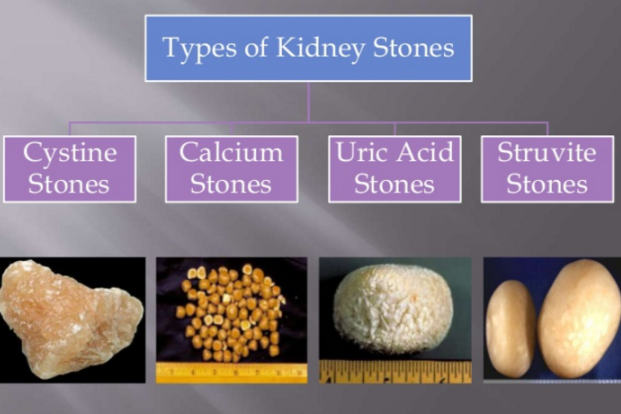Kidney Stones vs UTI: Professional Insights on Symptoms, Analysis, and Monitoring
Kidney Stones vs UTI: Professional Insights on Symptoms, Analysis, and Monitoring
Blog Article
Recognizing the Secret Differences In Between Kidney Stones and Urinary System Infections: An Extensive Review for Individuals
Comprehending the differences in between kidney stones and urinary system infections (UTIs) is vital for people who might be experiencing similar symptoms yet encounter significantly different health and wellness obstacles. As we explore these critical aspects, it comes to be clear that acknowledging the one-of-a-kind features of each condition can profoundly influence patient results.
Review of Kidney Stones
The formation of kidney stones, a typically debilitating and painful problem, underscores the vital relevance of preserving kidney wellness. Kidney stones, likewise called renal calculi, are strong masses that create from crystals in the urine. These stones can vary in size from a grain of sand to a golf sphere and can stay in any component of the urinary system tract. The primary sorts of kidney stones include calcium oxalate, calcium phosphate, uric acid, struvite, and cystine stones, each with unique reasons and threat variables.
Numerous elements add to the formation of kidney stones. Furthermore, metabolic disorders and specific medical problems might predispose individuals to stone formation.
Signs and symptoms of kidney stones can include extreme flank queasiness, pain, and hematuria, which usually motivate urgent clinical assessment. Treatment alternatives vary, varying from raised fluid consumption and dietary alterations to medical interventions such as lithotripsy or medical removal, depending upon the size and location of the stones. Recognizing these facets is essential for efficient prevention and monitoring.
Summary of Urinary System Tract Infections
Urinary system system infections (UTIs) represent an usual yet significant health and wellness issue, affecting millions of people annually. These infections occur when bacteria go into the urinary system, which includes the kidneys, ureters, bladder, and urethra.
The danger aspects for creating a UTI consist of sexual task, specific types of birth control, urinary system retention, and a background of previous infections. Straightforward UTIs are generally restricted to the bladder and are a lot more common in healthy individuals, while challenging UTIs might involve the kidneys and happen in those with underlying health concerns.
Trigger medical diagnosis and therapy are important to avoid complications, such as persistent infections or kidney damage (Kidney Stones vs UTI). Usually, UTIs are treated with prescription antibiotics, and safety nets can be employed for those with frequent occurrences
Usual Signs And Symptoms Contrast
Signs and symptoms of urinary system system infections and kidney stones can frequently overlap, leading to complication in medical diagnosis. Both problems can offer with discomfort in the reduced abdominal area or back, but the nature and area of the pain usually vary. In urinary system tract infections (UTIs), patients usually experience a burning sensation throughout peeing, constant advises to pee, and strong-smelling or gloomy urine. On the other hand, kidney stones tend to create serious, sharp discomfort that radiates from the back to the reduced abdominal area and groin, typically called colicky discomfort.
Furthermore, UTIs may be accompanied by high temperature and chills, particularly in much more extreme cases, while kidney stones can lead to nausea and throwing up due to extreme pain. While discomfort during peeing is a hallmark of UTIs, kidney stones commonly provide with more acute pain episodes, which may go and come.
Medical Diagnosis Methods
Exactly how can health care specialists precisely set apart between kidney stones and urinary system system infections? The analysis process begins with a detailed clinical history and a detailed review of the person's signs and symptoms. Clinicians usually do a physical assessment, which might disclose inflammation in the abdominal area or flank area, guiding the analysis pathway.
Lab tests play an important duty in comparing these two conditions. Kidney Stones vs UTI. A urinalysis can recognize the presence of blood, crystals, or germs, which are a sign of either condition. In instances of urinary system system infections, the his response urinalysis may reveal a considerable existence of white blood cells and nitrites, while kidney stones may present with details crystals
Imaging researches, such as abdominal ultrasound or computed tomography (CT) scans, are vital for imagining kidney stones. These imaging methods enable doctor to analyze stone size, place, and possible obstructions in the urinary system system. In contrast, urinary tract infections typically do not need imaging unless complications are suspected.
With each other, these analysis approaches equip medical care specialists to accurately identify and separate in between kidney stones and urinary system infections, making certain that clients obtain ideal treatment and management.
Treatment Choices and Avoidance
While both kidney stones and urinary system system infections (UTIs) require punctual treatment, their monitoring techniques vary dramatically.
The therapy for kidney stones commonly includes discomfort administration, hydration, and in many cases, medical treatments such as extracorporeal shock wave lithotripsy (ESWL) or ureteroscopy to get rid of or damage down stones. Individuals are frequently advised to enhance fluid consumption to promote stone flow and home decrease recurrence. Dietary modifications might additionally be required, depending on the stone kind.
In comparison, UTIs are largely treated with antibiotics to eliminate the microbial infection. The details antibiotic suggested relies on the bacteria identified and neighborhood resistance check here patterns. Additional measures, such as enhanced fluid intake and urinary system anesthetics, might aid relieve symptoms.
Prevention strategies vary too; for kidney stones, keeping appropriate hydration and adhering to nutritional constraints can be effective. For UTIs, preventative methods include correct hygiene methods, peing after sexual intercourse, and potentially preventative antibiotics for reoccurring infections. Understanding these treatment and prevention modalities is crucial for effective management and to minimize the risk of difficulties related to both problems.
Verdict

Recognizing the distinctions between kidney stones and urinary system tract infections (UTIs) is crucial for people that might be experiencing similar signs and symptoms yet face significantly various health obstacles. The primary kinds of kidney stones include calcium oxalate, calcium phosphate, uric acid, struvite, and cystine stones, each with unique reasons and danger factors.

Report this page